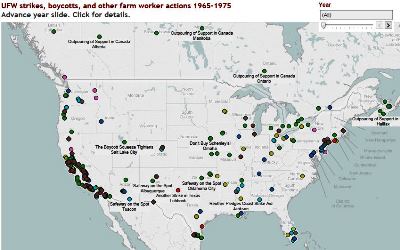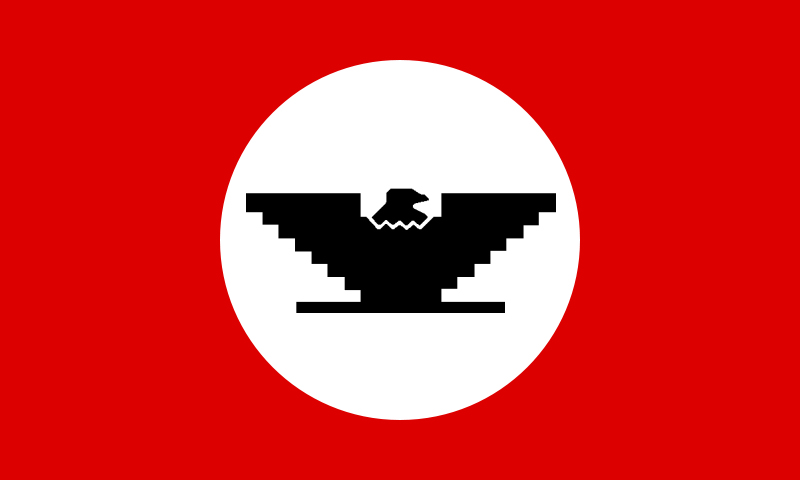When ethnic Mexican farm workers led by Cesar Chavez joined with Filipino American workers led by Larry Itliong in 1965 to strike grape growers in Delano, California, the modern farm workers movement was born. Operating initially as two organizations--the National Farm Workers Association and the Agricultural Workers Organizing Committee--they merged in 1966 to become the United Farm Workers Organizing Committee and later the UFW. That same year, the union spread beyond California as it launched a national grape boycott and inspired farm worker organizing in other states.
Here we explore the history and geography of the UFW, including (1) a timeline of more than 1,000 farm worker strikes, boycotts, and other actions, some involving independent farm worker unions; (2) a set of interactive maps that dynamically show the locations of those events; and (3) an essay that highlights key actions and details the changing geography of the UFW.
This section has been researched and written by Katie Anastas and supported by a gift to the Digital History Initiative, History Department, University of Washington.
|
Here are five maps and charts showing the geography of UFW and farm worker activism, locating more than 1,000 strikes, boycotts, and other actions. The interactive maps show year by year and month by month actions for the UFW and other farm worker unions. |
|
This timeline records more than 1000 UFW and farm worker actions as reported in El Macriado, Los Angeles Times, New York Times, Seattle Times, and other sources.
|
|
By Katie Anastas
This short essay summarizes the changing geography of UFW actions from 1965 to 1975 based on the database of news reports in El Macriado, Los Angeles Times, New York Times, Seattle Times, and other sources.
|


